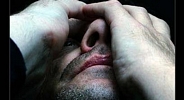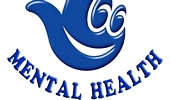|
|
 Acne (1,500) Acne (1,500)
 Addictions (1,500) Addictions (1,500)
 Advice (1,500) Advice (1,500)
 Allergies (1,092) Allergies (1,092)
 Alternative Medicine (1,500) Alternative Medicine (1,500)
 Anti Aging (1,500) Anti Aging (1,500)
 Breakup (1,500) Breakup (1,500)
 Cancer (1,499) Cancer (1,499)
 Dental Care (1,500) Dental Care (1,500)
 Disabilities (1,500) Disabilities (1,500)
 Divorce (1,500) Divorce (1,500)
 Elderly Care (1,498) Elderly Care (1,498)
 Goal Setting (1,500) Goal Setting (1,500)
 Hair Loss (1,500) Hair Loss (1,500)
 Health and Safety (1,497) Health and Safety (1,497)
 Hearing (1,500) Hearing (1,500)
 Law of Attraction (1,499) Law of Attraction (1,499)
 Marriage (1,500) Marriage (1,500)
 Medicine (1,497) Medicine (1,497)
 Meditation (1,499) Meditation (1,499)
 Men's Health (1,500) Men's Health (1,500)
 Mental Health (1,500) Mental Health (1,500)
 Motivational (1,500) Motivational (1,500)
 Nutrition (1,495) Nutrition (1,495)
 Personal Injury (1,499) Personal Injury (1,499)
 Plastic Surgeries (1,500) Plastic Surgeries (1,500)
 Pregnancy (1,496) Pregnancy (1,496)
 Psychology (1,500) Psychology (1,500)
 Public Speaking (1,500) Public Speaking (1,500)
 Quit Smoking (1,500) Quit Smoking (1,500)
 Religion (1,499) Religion (1,499)
 Self Help (1,500) Self Help (1,500)
 Skin Care (1,500) Skin Care (1,500)
 Sleep (1,500) Sleep (1,500)
 Stress Management (1,500) Stress Management (1,500)
 Teenagers (1,492) Teenagers (1,492)
 Time Management (1,500) Time Management (1,500)
 Weddings (1,500) Weddings (1,500)
 Wellness (1,500) Wellness (1,500)
 Women's Health (1,500) Women's Health (1,500)
 Women's Issues (1,500) Women's Issues (1,500)
|
Returning to the community can be a shocking experience for the stroke patient and in the United Kingdom various support services beyond primary health care have been developed to enhance survivors abilities to cope with the illness and to facilitate a return to normal life. In addition to national organisations providing information to stroke survivors, there is a growing number of locally-based self-help groups who provide care and support for stroke survivors and their family carers. The general opinion however, is of a low level of service provision for stroke survivors after they are discharged from hospital and go back to live in the community (Stroke Association 2000). Since most stroke survivors prefer to stay at home, community-based care has acquired a greater relevance (Salvage, Jones and Vetter 1989; Steel 1991). An important requirement of good health care and social services for stroke survivors living in the community is flexibility of provision, which involves the need for patient assessment before admission to the appropriate service (Black and Bowman 1997). An integrated social and medical care case management programme may be one way to reduce admission to institutions and to prevent the functional decline of stroke survivors (Bernabei et al 1998). Several studies have investigated the effects of community intervention, including community physiotherapy, community occupational therapy, community nursing and general practitioner services, on the outcome of survivors' care and management (Kelson, Ford and Rigge 1998). However, there is a lack of information about which model of intervention is the most efficient in reducing the disease burden late after stroke. This may be because the effects of stroke and the needs of survivors are varied, due to the nature of the stroke, and to meet these needs interdisciplinary interventions carried out in hospital out-patient clinics, day centres and at home may be required.
|
|
|



